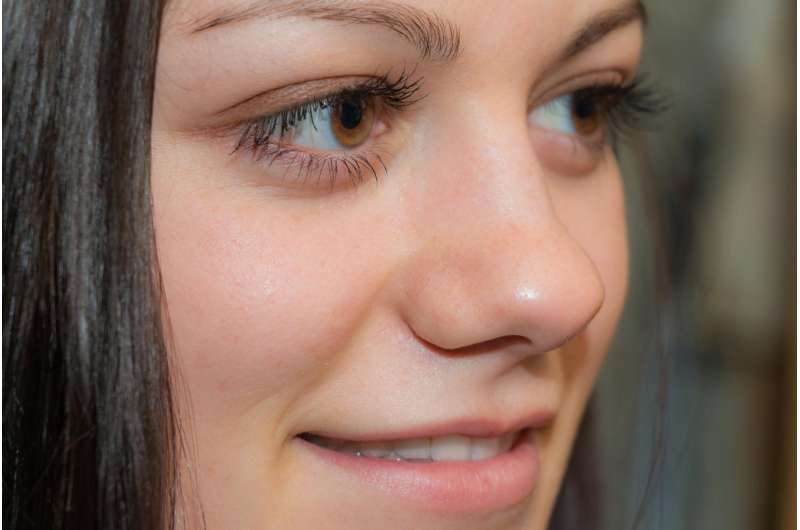Twin research reveals which facial features are most controlled by genetics

Research published this week in Scientific Reports uses computer image and statistical shape analysis to shed light on which parts of the face are most likely to be inherited.
The study, by researchers at King's College London, examined 3D face models of nearly 1,000 UK female twins, and found that the shapes of the end of the nose, the area above and below the lips, cheekbones and the inner corner of the eye were highly influenced by genetics.
The team took scans of twins' faces using 3D cameras and custom built statistical software to generate thousands of points that were perfectly aligned across the faces and then measured how 'curved' each face looked at each one of those locations.
The researchers then compared how similar these measurements were between identical twins, who have the same genes, and non-identical twins, who only share half of the genes. By seeing which parts of the face are the most similar in shape in a pair of identical twins, the researchers then calculated the likelihood that the shape of that part of the face is determined by genetics.
This likelihood is quantified as the "heritability", a number between 0 and 1, where a larger number implies that it is more likely that the shape of the face is controlled by genes. The researchers have published 'atlases' showing how heritable each part of the face shape is, which can be viewed online at: http://heritabilitymaps.info
Lead researcher, Professor Giovanni Montana from King's College London said: "The notion that our genes control our face is self-evident. Many of us have facial traits that clearly resample those of our parents and identical twins are often indistinguishable.
"However, quantifying precisely which parts of the face are strongly heritable has been challenging so far. By combining 3D models of the face with a statistical algorithm that measures local changes in shape, we have been able to create detailed 'face heritability maps'. These maps will help identify specific genes shaping up the human face, which may also be involved in diseases altering the face morphology."
"This study also shows us that even identical twins can vary quite a lot on facial features, but because of the key areas being genetically controlled, we perceive them as being 'identical,'" added Professor Tim Spector, Director of the TwinsUK study at King's College London.
The software for analysing 3D scans could also have other uses in medical imaging, engineering and facial recognition technology.



















